Have you ever heard of the “S Curve”? If you listen to my interview with author and team building thought leader Whitney Johnson you will be learn about the “S Curve” and its importance in the business world today. Whitney is the author of a new book entitled “Building an A Team-Play to Their Strengths and Lead them Up the Learning Curve.”
The secret to having an engaged and productive team, is having a plan for developing all of your employees – no matter where they are on their personal learning curves. Better morals and higher performance happen through learning, states Whitney. “The best bosses know this, and they know how to make it happen by thoughtfully designing people’s jobs around the skills they have today as well as the skills they’ll need to be even more valuable tomorrow. That’s how entire organization stay competitive in an unpredictable, rapidly changing business environment.”
Through engaging stories and real life examples, Whitney engages the reader on a learning journey on how to build your A Team. This interview and book are for anyone who is looking to improve the performance of their workforce, as well as prepare them for the future as valuable team members with contributions that matter.
If you want to learn more about “Building an A Team“, please click here to be directed to Whitney’s website and podcast show called Disrupt Yourself, the title of her previous book.
I hope you enjoy this very engaging podcast with author and thought leader Whitney Johnson.
You may also refer to the transcripts below for the full transcription (not edited) of the interview.
Podcast 751: Build an A Team with Whitney Johnson
Greg Voisen
Welcome back to Inside Personal Growth. This is Greg Voisen I'm the host of Inside Personal Growth. And Whitney as I do every time I always thank my listeners, because without the listeners who has a podcast, you've got your own podcast. So you know, it's all about the followers and the listeners. And it always amazes me at the number of new people that are listening to the show. And again, thank you everybody for listening. And today joining us from Los Angeles is Whitney Johnson. She's the author of several books, but we're going to be talking about her new book called Building an A team. Whitney Good day, Tia, how you doing?
Whitney Johnson
Good morning. I'm doing fine. Thank you, Greg for having me.
Greg Voisen
Well, it's great having you on I know you have your own podcast show. And I always like to let my listeners know a little bit about our guests and authors. Whitney is one of the 50 leading business thinkers in the world through thinker 50, which for many of you know, Marshall, Goldsmith is pretty heavily involved in that. And an expert on disruptive innovation and personal disruption, a framework codified in the critically acclaimed book, which was our first book is that your first book disrupt yourself is actually my second book, Daddy, oh, second, okay, putting the power of disruptive innovation to work. As well as this award winning book we're going to be talking about a team published by Harvard Business Press. Last year, our proprietary framework and diagnostics were developed after co-founding the disruptive innovation fund with Harvard Business School's Clayton Christensen. She is formerly an award winning stock analyst on Wall Street coach to Harvard Business School executive education. And in 2019 was ranked number three on the global gurus top 30, organizational cultural professional. And so and it goes on and on. Well, Whitney, it's great to have you and for my listeners, if you want to learn more about Whitney, it couldn't be any easier. Just go to Whitney johnson.com. You can check her out there her podcast speaking books, order books, learn more about Whitney. Whitney, I always like to start these interviews off. And you know, yours is about building an 18 with inside a company. And it's really you're focusing on, you know, how do we give the employees what they want? And how do we keep them as continual learners. And you tell a great story. We were just talking a second before because you were down here in San Diego, about a company here in San Diego, which was the formation of that company and the evolution that ultimately disrupted? I'm going to call it the lubrication market. How's that? Can you tell that story? And how this relates to how this 18 was built over time? I mean, I didn't even know it went back to 1953. You know, that it had started way back.
Whitney Johnson
Yeah, it's such a great story. And so I'm going to set it up and have your listeners have a little bit of suspense since you haven't named the mystery company yet. So let's set the stage for all of you who are listening. And I want you to imagine that you've just gotten a call from a headhunter. And it's for a job with a company that makes a product like Greg just said, that was invented over 60 years ago. It the time it was really important to kept rockets and missiles from rusting. But since then, since those 60 years ago, not much has changed. Not even labeled, like this is not a flashy company. It's not a Silicon Valley company. And so the question I would ask all of you is, would you be interested like the headhunter calls you would you think? Yeah, yeah, yeah, I want to talk I want to hear more. And a lot of your being like No, no really not too exciting. But what if I give you a little bit more information, I tell you that people love to work at this company, they don't like it, they love it. So their engagement scores are over 90% plus, that's versus an average in the United States at 30%. For your international audience, that's an average of 15%. So engagement scores, off the charts, people love to work at this company. And one more piece of data I'll give you, their market capitalization over the last 20 years has increased from $250 million to $2.5 billion. So an increase of 10 times significantly outperforming the s&p 500. You're like, Okay, this is sounding more interesting, right? You're, it's a lot more interesting. Well, here's the mystery company, the mystery company, is WD 40. They make a cannibal oil, they stop things from squeaky it's not flashy. And so the question then becomes, why do people love to work in this company. And what we discovered is when we research the company, when we, we interviewed the CEO, Gary ridge, and I was actually just with the company last week, we discovered something very interesting, which is, this is a company that you they have three of their senior people, they started as a receptionist one is now the company brand manager. This is a company that allows people require them, encourages them, but certainly requires them to disrupt themselves, to basically reinvent themselves through repeated personal disruptions to learn, leap and repeat. And our thesis is, and what we're seeing proving out with companies over and over again, is the thing that that motivates people, even beyond praise. Certainly beyond compensation is his opportunity to learn. And when you work at WD 40, you have the opportunity to learn to disrupt yourself to learn, leap and repeat. And that is why people like to work there, even though it's not a flagship company.
Greg Voisen
Well, WD 40 might not be a flashy company, but a sustainable product that everybody needs. I've used WD 40, I can't tell you for how many years and when you look on the shelf, it's the only thing you grab off of the shelf, so I can see why they have such great market share. Because whatever the secret formula is, that stuff works amazingly well, is that. So good. Kudos to them. And Gary is a wonderful guy. Now you start to build an A team that we need to focus on helping people learn to become better continual learners. In other words, anybody who listens to podcasts, anybody who goes to continuing education courses, it's really about today's world is moving so fast that you've got to stay as a continual learner. What is the S curve of learning all about that you speak about in the Burke book so highly?
Whitney Johnson
Yeah. Okay, so the S curve of warning. And first of all, what I want you to do is, I want you to picture in your mind this, so you've gotten this flat bottom and almost looks like a roller coaster. So flat bottom, and then you have this steep incline minutes, flattens off at the top. And the S curve itself was originally popularized by Jim Rogers in 1962. So a lot going on with this 15, six years ago, popularized by Aaron Rodgers. And to help people figure out how quickly an innovation would be adopted. We use it at our disruptive innovation fund to figure that out with investing. And so what that S curve tells you is that at the base of the s growth will be slow. Because even though things may be growing quickly, the exponential growth is not yet obvious. So growth, lots of time passes, growth is very slow. But then at some point, and it's going to hit the knee of that so on or, or there's an inflection point where it moves into the steep part or hyper growth. And then at saturation of the market, that growth, you get to the top, yes, and it tapers off. Well, the big insight, the big aha that I had is we were using this S curve for investing is that the S curve could actually be applied to people, it could help us understand how you and I learn and grow and develop. And so let me walk you through that. What it means is that every time you start a new project, you start a new role. You start anything new, you are at the bottom of that F. And so it tells you that by definition, the growth is going to feel like it's happening really, really slowly. And then the good news though, and knowing that is that okay, well, I know it's supposed to be slow, or it looks slow, at least until I'm not going to get quite so discouraged. And then you move to that near that curve or the steep part. And now the growth is accelerating. So whereas at the low end took a lot of time for it to look like anything was happening now and a little time a lot happen. So this is the exhilarating part of your learning. It's exciting things are hard, but not too hard, easy, but not too easy. That's the sweet spot of your ass. And then you get to the top. And things are become very easy. You've mastered it, you know what you're doing. But you're not feeling exhilarated like you were on the sweet spot. And so whereas the low end, you were overwhelmed, and then you were exhilarated. Now there's a sense of underwhelmed, because you're not learning like you were and you're not getting the dopamine that comes, those feel good effects that come with learning, you start to get a little bit bored. And so you experience what we call a sort of this dilemma, the innovators dilemma, whether you jump to an S curve or not, you've got risk. But everyone, if you think about your life, your career, etc, each one of us are on an S curve of learning. And when we understand that, we can figure out how to gain momentum along that S curve. And then also recognize, if you look back at your life, you've climbed that S curve, and every three or four years, it's time for you to jump to a new S curve and do something new. So you learn, you leave and repeat. But again, everyone's on an S curve of learning, including you, right?
Greg Voisen
I totally am. I like it, learn, leap and repeat, you know, constantly. And I know that when you talk to speakers, or even podcasters, like you said, Oh, my gosh, you're you were at the top of the curve when you started doing podcasts? Yes, it's true. People used to say, well, you know, do you ever get nervous doing them, I used to get really nervous, just like speakers the first time but they say, hey, it's always good to have butterflies in your stomach, before something, especially going out and speaking before a large group of people. And, you know, and I really think there is, it's that adrenaline rush that you get by actually doing something new and exciting. Now, you mentioned that as a manager hiring inside of company, someone new, right, you might have, it might be a little bit challenging, because they're at the bottom of that S curve. And a manager might doubt a little bit about how long it's taking this person to come along the S curve. And you say that there are two types of risk here. Can you speak with our listeners about the two types of risk and the doubts that a manager might have when they hire somebody new for a position and how long it's taking them to learn? And actually get along the asker?
Whitney Johnson
Yeah, so whenever you hire someone new so a moment ago, I said that you know, for the person in that role, because there are new and they're trying to figure things out, there's like this jumble of puzzle pieces, 1000-piece jigsaw puzzle, and you put them all on the table, and you don't yet know how they fit together. That's experience that your new employees having this sense of overwhelm, but it means for you, as a manager, or leader who's hired this person, you're like, they're going to be great in this role. But now it looks like they're not making any progress. And so for you, you can feel some sense of impatience or wondering if, in fact, you've hired this person into the right role. What we've seen in our research, and this really does map against the 10,000 hour rule, if you're working only 40 hours a week, is it's going to take you about six months, really six months to a year, sometimes it's going to be shorter, but on average, six months to really move into that sweet spot of the S curve. And so it helps, it's helpful for you to know as a manager, okay, so what do I need to do? What can I do, this person can move into that seat part of the curve as quickly as possible? And that includes things like really tightly scoped assignments so that they can get feedback very, very quickly on you know, I need you to work on this assignment or this project that may take them a couple of hours, a couple of days, they're getting information, lots and lots of information, allows them to iterate and gain momentum more quickly. Now, you asked this question about market, the right kinds of risks. And I want to just make sure before I answer that question, are you asking me to talk about market versus competitive risk? Or you asked me to talk about another kind of risk in mind? I want to make sure I answer the question.
Greg Voisen
No market versus competitive risk. Yeah, that was perfect. The follow on question? Yes.
Whitney Johnson
Okay. Excellent. All right. So whenever you jump to a new S curve on, there are two kinds of risks that I want you to think about. And this is when you're starting on that S curve, or jumping to a new S curve. There's competitive risk, and there's market risk. And this, by the way, is that very first accelerant to personal disruption or personal destruction framework, it's taking the right risks. So competitive risk is, it looks like there's a huge opportunity, but there's also a lot of competition. So in the business sphere, you know, you sculpt it out, you've done these projections, you're like, This looks fantastic. But you know, there's a lot of competition in order to gain market share. Market Risk looks very different. You don't know if there's a market you don't know if there's an opportunity, but if there is because it's new on you, if there is that market, then there's not going to be any competition. Now, what does that look like for you personally as you're thinking about jumping to a new asker. So competitive risk looks like a big job. But you look around and you go, you know, there's 10 other people or maybe 50 other people who are applying for that job, I've got to figure out if I can compete and win, and sometimes you can compete, and sometimes you will win. And most people listening to this podcast and won a lot. So there are times when it absolutely makes sense to take on competitive risk. If you want to win even more, you're going to figure out ways to take on market risk and market risk looks like you don't know if there's a job. But there is a problem that you think needs to be solved either inside of your current organization or elsewhere, you think you can solve it, if you're able to persuade people that if needs to be solved to create that market, then there won't be 10 applicants, there will be you. And what we know from the theory of disruption. And this goes back to the innovators dilemma written by Clayton Christensen, which my work is, which is obviously foundational to my work, is that when you pursue a disruptive course, your odds of success are six times higher, and your revenue opportunity 20 times greater. So it makes a lot of sense for you to look for ways to take on market risk. And I'll say one more thing on this, that I think encapsulate this, encapsulate this idea, which is that amateurs compete. Professionals create. And so whenever you're thinking about, okay, I want to jump to a new S curve, how can I do this, and I want to move up that S curve quickly, what are ways that I can compete as little as possible and create as much as possible?
Greg Voisen
I think you put a really well, and I think it is that leap between the S curves that people have to make that the risk has to be weighed out. And as you said, it's so important to understand that. Now, you remind us in the book, that human resources, the goal that is really to look at it as raw materials instead of finished products. And I love that statement. Because I think human resource, people frequently make the mistake and they say, oh, yeah, you know, I have a finished product here. But you don't really have a finished product when you're hiring somebody new in a company to build an 18. Why is this perception of perspective that we take in hiring so important for a company to kind of embed with inside of the DNA so that they understand to build an 18? Why is that? You know, looking at it a completely new way? Because I think most HR departments really do look at it as finished products. They're going, Hey, we found our candidate, we went through 2000 people, this is the best person. And the reality is there's still a learning curve.
Whitney Johnson
Right? So the reasons it's important, if you think about this idea from the stock market, I've got a stock market background. You want to buy low and sell high, right? That's how you make money? Well, if you think about this, from a hiring perspective, you want to buy low and sell high? Well, if you buy at the high, meaning a person who's at the top of that S curve, what does that mean? It means first of all, they're going to pay top dollar. So from a, from an ROI perspective, it's a lot harder. But more importantly, when you hire someone at the top of an S curve, who knows exactly what they're doing, what do we know about that person, we know that their dopamine, they're not going to be getting the dopamine hits, they're going to be slightly bored. And so even though it may take them six months or so to figure out how to navigate inside of this organization, there's no upside for them from a learning perspective. And so now you've got this problem of you put this person in a roll, and within maybe a year, maybe 18 months, they're going to start to stagnate and say, What do I do now? What do I do, I'm bored. And they're not going they're likely to leave, they become a flight risk much sooner. But then you've also got a problem where you've got people on staff who aren't innovating. And most of us have a lot of trouble getting rid of people who are no longer motivated, who are stagnating, it's very difficult for us to let people go because we'd like them. And we want them and we don't like confrontation for all those reasons. And so when you get people at the top of the curve, that's the challenge. The other piece of this is really important is that when you hire people in the launch point of the curve, and you give them that opportunity, you're basically hiring for potential not for proficiency. A couple of things happen, all that value that gets created as they learn. As they develop you as an organization capture. You get to capture that initial part where they ask questions like, why do we do it like this? And those are questions that opened the door to innovation but you only get them when people are in the launch point of the curve and I'm not just talking about college grads. As we're talking to Brett about a brand new see CFO, a brand new CEO, they see things are not blind to familiar, then you get that capture that comes as they move into that sweet spot of the curve where things are hard, but not too hard and easy, but not too easy. And so when you're willing to hire people on the launch point, you capture that value that comes, they are happy, because they're learning. And because they're learning, they're loyal. And so you've got now this person who's going to be in this role, very productive for several years. And if they believe that you're willing to hire for potential, that means that we're probably going to have an opportunity to jump to a new learning curve inside of the company as well, which is what we've seen with WD 40. So all sorts of reasons to go back to that stock market maximum, buy low and sell high, higher for potential not for proficiency, it benefits the individual. And because it benefits the individual and allows them to be a high growth individual, you then have the makings of a high growth organization.
Greg Voisen
Well, I really appreciate the perspective you bring to this. Because I would say that, you know, your message needs to resonate with more and more companies, because I don't think they get it. And that comes to the questions you even ask when you're building a team, and you have some of them in there. And I think it's important the questions that you would actually ask a candidate that you're trying to hire, to bring on in almost any position. Can you tell us some of those questions, you think that somebody from HR might be listening right now, was probably saying, Wow, this is a great new perspective, I should take this upstream and talk to some of my superiors about what we're talking about.
Whitney Johnson
Yeah, so a couple of thoughts there. First of all, on I have a, a worksheet and so on, Greg, what we can do is if you want and send, we can send you a link so that people can download the worksheet of like, 12 questions that people? Sure. So if you want include that in the show notes. Here are a couple of
Greg Voisen
and you had some of the questions in the book themselves, too. There were, I don't think there were 12. But yeah, we'd love to give that length to the listeners, that would be a big added value.
Whitney Johnson
Cool. Okay, so but let me expand on that. So one question you can ask, and I may have modified this into the book. So you'll just get even more than what's in the book. But one is only the last time you disrupted yourself. When was the last time you know, we're doing one thing? And then you said, I'm going to go do this other thing. And people looked askance at you like why are you going to go do that? Like you're not going to make as much money? Or you're not going to have what seems to me the same kind of upside? And what did that look like? And part of the reason you want to ask them that question is it helps you understand? Are they willing to take calculated risks? Are they willing to step back in order to grow and move sideways in order to slingshot forward? So that's one question that you can ask a person a second question I would ask and it because you're all you're always trying to figure out, you got to test for subject matter expertise. But what you want to figure out is can this person grow in this role and grow inside of the company? A second one is when is the last time you got feedback? And this is a question that has many layers to it. But the one of the reasons that you want to ask us is if the person says, Well, you know, I really haven't gotten any feedback recently, then what that's potentially telling you. And so you want to double click on this is it's potentially telling you that this person is not receptive to feedback. And if you are, the only way to get better a lot faster is to be willing to be receptive to feedback. And if they're not receptive to feedback, it means that people have just stopped giving them feedback. So that's one of the things you want to just like, when was the last time you got feedback? What was it? What did it look like? What did you do? Because that gives you a good sense of how resilient this person is and how quickly they can learn how quickly they can move up learning curves. And hybrid organizations have people capable of moving up learning cliffs quickly? And then the third question I like to ask, I think is a really valuable question in terms of understanding people is this comes from a great story of, of former President Jimmy Carter, who's now won the Nobel Peace Prize is when he was in the military, like in the 40s. He hadn't bought Admiral Hyman Rickover, who's basically the father of the modern day submarine. He was interviewing me and he said, he said, you know, where were you in your class and the Naval Academy? And he was like, I was like, you know, in the 80s out of 700 people roughly. And then he asked them, it's really penetrating question, which was, did you do your best? Jimmy Carter thought about it for a minute and thought, you know, I'm going to, I should keep thought about saying yes. And you realize you said no, no, I did not. Here are the things that I could have done differently. And I think that's a really important question, because if the person will either tell you Yes, absolutely. You will have a sense If in fact they're telling you the truth, or it gives you an opportunity having to say, you know, I could have done these things better. And it allows for self-reflection, but also an ability to analyze and again, go back to this notion of continuous improvement, which is what you're shooting for, when you're hiring for potential, because you're trying to figure out is this person, one that can fulfill the promise fulfill the potential that I see. And now if I heard them?
Greg Voisen
Well, it's, it's certainly something that HR people in particular, need to be more focused on. And that this whole concept, I noticed that the way people do evaluations and interact with employees, from companies to company, my, my eldest son was an employee at Adobe for seven years, and I watched how they did evaluations, and you state that new hires need to have a vision, they need to understand the why of their job and how it's necessary. And this basically powers them through difficult times. What do you recommend in helping new hires in creating this vision and this plan, I know that some of the most successful companies have gone away from traditional evaluation methods I've seen everything from, okay, we're going to have your peers evaluate you and see what you're doing? And a lot of them and some of the companies have adopted this, Hey, what's your vision plan, but not very many that I've seen? What do you what do you recommend there?
Whitney Johnson
Yeah, so um, as with anything new, it's always easier to start with, you know, very small companies or start with your team. And this goes back to questions you asked earlier. And it's hard to go to a, you know, organization, it's got 10s of 1000s of people, even hundreds of 1000s of people and say, let's change the way we're doing this. And so I always recommend that you start with where you are, and with your team, and one of the ways that you can do this is you can pull out this S curve. And we've got cards that you can use and just draw that S curve and say, Okay, first of all, I want to share with you the why of this organization, here's why we're doing what we're doing. Second of all, here's the why of our team, what is it we are trying to do in order to support organization. Now, let me share with you as a manager, my why. And let me talk to you about what I see for you. You're on this S curve. I see you here right now, I think in several years, two to three years, three to four years, you can be at the top of this S curve. And here's what I envision that will look like for you, here are the things that you're going to do in the interim. But once you get to that top, that s curve, and you execute against the plan, the plan that we have for you well, and of course we don't know the exact plan. But there are some certain things that we know need to be accomplished, when you get to that top of that S curve, because you're wise to learn and grow and develop. Because that's part of human nature. That's the imperative human nature. Once you get to that top, then we'll find a new S curve for you to jump to because we're going to value you and we want you to be here etc. And so you can then use this S curve as a tool for having that conversation and ask them where do you think you are right now, because they might have a different view as well. But it begins, it gives you a conversation, a way to start that conversation about their development, and then about the overall why for the company. And then the last thing I would say on that, and I think this is really important, that I say to my new people is, every time I give you feedback, every time I tell you something that needs to be corrected, I want you to remember that that is a message to you that I am invested in you and your development. Because the minute we don't give people that feedback, we've actually stopped investing in them. So every time you get that feedback, it might be hard. But this is me investing in you and your development, your ability to become a high growth individual and climate as quickly.
Greg Voisen
That's a great way to have somebody actually interact with doesn't matter if it's a longtime employee or a new employee, to really show them where they are. And that s curve like you said, you have some cards, we are going to give the listeners those questions, and then encourage them to go to the website and look for the resources there. Now, you mentioned at the high end of the s curves about 15% of the workforce, you state that there are three important roles that this group of individuals can play. They can be pacesetters, trainers or mentors. Can you comment on how we can utilize their improved bandwidth because obviously, when you get to the high end of the S curve, it's taking less effort to figure things out to help the other people on the S curve move along more quickly.
Whitney Johnson
Yeah, absolutely. Um you that is why you need 15% of your people at the top of that S curve because they are able to act as is stabilizing force for people who are trying to disrupt their way up that S curve. And, and so if you think about the pace that are the first thing that you mentioned, it's like the pace car in the Indy 500, that person who's at the top of that S curve needs to be setting the pace for everybody else, because people are watching you. And so even though it's easy for you, there, it's important that you continue until you jump to your new S curve, because you will, because that's part of the deal. But until you do that, are you setting the pace for everybody else in terms of your work ethic, in terms of your degree of commitment to the success of the people you work with, to your team to the organization? So that's the first thing. The second thing is to train people, like you've got skills, you've got mad skills now, right? People are coming to you they're asking questions, is, are you making sure that you see that as part of your responsibility of being at the top of the S curve, and that role that you're playing on the team, one of the things that we haven't talked about yet is, one of the ways you become a high growth organization we're seeing in our research is you optimize those S curves. So you want to have 15% of your people behind which you mentioned 70% of your people in the sweet spot and 15% of your people below. And because they all play different roles in terms of the innovation that happens. One of them is this idea of training that you brought up is are you training other people so that they can successfully move along that S curve from both some skills, subject matter expertise, perspective, but also from a leadership perspective? And then the third one, which is somewhat similar to these other ones is, are you mentoring these people? Mentoring, I think, is partly about domain expertise. But a lot of it is about the culture and how to be able to successfully navigate inside of this culture. And so that's the role that that person plays. It's very important from an innovation, they also give you something to bump up against and say, well, we'd have tried this, but have you thought about this, this, et cetera, et cetera, so that that's the role that they can play at the top of the curve?
Greg Voisen
Well, Whitney, you've certainly given all those individuals with inside the company, including those people who might be considering joining an A team, something to think about a new perspective to connect the dots in a different way to look at their career in a different way from moving from one S curve to another. And I really appreciate that perspective. And for my listeners, we've been on with Whitney Johnson, it's build an A team play to their strengths and lead them up the learning curve. And I think our show is always about people who are on continual learning, because they wouldn't be listening to these podcasts if they weren't continuous learners and wanted to know more about the topics that we cover on the show. So I appreciate you being on the other one I'll mention is when you go to Whitney's website, and we'll put a link to the other book. I didn't get a chance to ask her that question about the seven steps and disrupt yourself. But we'll put a link to disrupt yourself as well. So listeners can get that we'll also put a link to these questions that we referenced during the podcast that I'll get from Whitney. Any closing comments, Whitney, that you have for the listeners today?
Whitney Johnson
Yes, my final closing comment is remember that everyone's on an S curve of learning, including you and when you understand that you can help yourself and you can help the people around you that you work with, that you that you were that work for you help them build momentum and become a high growth individual. Because when we're able to learn, leap and repeat, because we get that dopamine, we're happy, which is ultimately what we're all trying to do is to be happy.
Greg Voisen
Learn leap, repeat, and try and get into the zone is what I'd say so great for great having you on Whitney, thanks so much for your wisdom and your knowledge and for putting this out there so people can learn more about the S curve and becoming continual learners. It was a pleasure having you on inside personal growth.
Whitney Johnson
Thank you for having me.
Sign up to receive email updates
Enter your name and email address below and I'll send you periodic updates about the podcast.
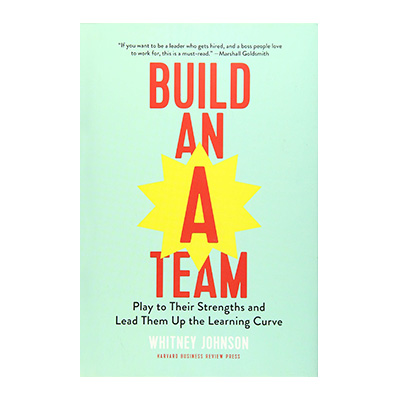
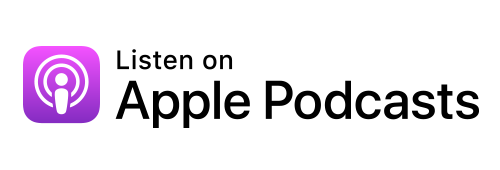

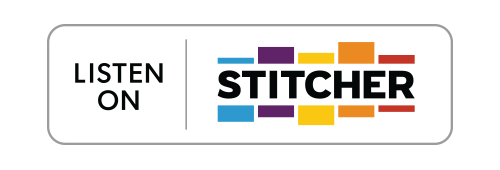


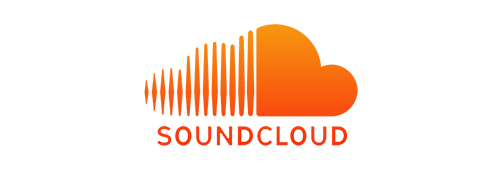

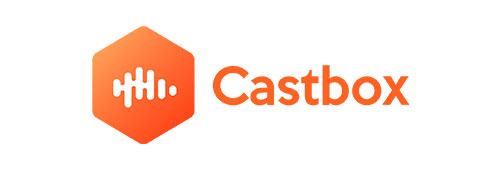
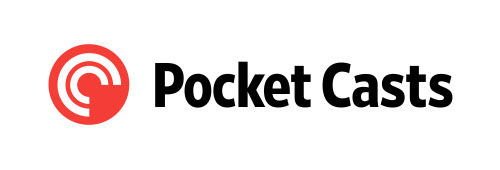
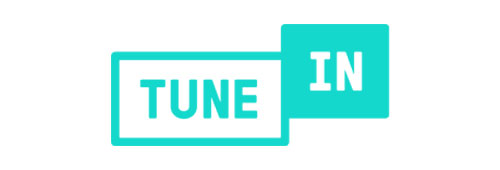
Leave a Reply